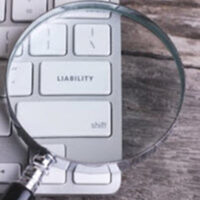Legal Responsibility for Rideshare Injuries

Most Uber drivers have practically no commercial driver or customer service experience. The rideshare company’s turnover rate is over 95 percent. Uber’s pay scheme encourages speeding and other forms of aggressive driving. It pays drivers by the trip, not by the mile. So, the more trips they complete, the more money they make. Furthermore, many drivers don’t know how to interface with customers or how to break up fights before something bad happens.
Usually, the company, not the driver, is legally responsible for damages in these situations. As outlined below, a variety of legal theories are available to a Carlsbad personal injury lawyer. Third party liability is very important in Uber injury claims. Most privat auto insurance policies exclude commercial losses. So, without third party liability, the tortfeasor (negligent actor) is essentially uninsured. Vicarious liability enables a lawyer to obtain compensation for economic losses, such as medical bills, and noneconomic losses, such as pain and suffering.
Crashes
We mentioned aggressive driving-related wrecks above. Operator impairment wrecks are also common in rideshare collisions, particularly fatigue-related wrecks.
Many ridesharing operators are behind the wheel early in the morning, around midday, and/or late at night. Most people are naturally drowsy at these times. Furthermore, most Uber drivers have dull-time commitments elsewhere. Driving after eighteen consecutive awake hours is like driving with a .05 BAC level, which is above the legal limit for commercial drivers in California.
The respondeat superior rule typically applies in these cases. Employers are financially responsible for damages if their employees are negligent during the course and scope of their employment.
Uber drivers are employees for negligence purposes, even if they’re independent contractors for other purposes, because Uber controls their behavior (who to pick up, where to take the passenger, etc.).
Furthermore, if Uber drivers are behind the wheel, they’re acting within the scope of employment. Deadheading riders waiting for fares benefit Uber because they’re available and because they have signs on their cars.
Passenger Injuries
Uber also has a duty to provide safe, secure environment for its passengers. We’ll look at the security issue below. Right now, let’s look at the safety question.
The pickup and drop off are the most dangerous points of the ride from this perspective. Uber drivers cannot pick up passengers in hazardous areas, like dark alleys or wet corners. They also cannot drop passengers off at such locations.
If the passenger insists on a dangerous dropoff location, the assumption of the risk defense might apply. Defendants aren’t fully responsible for damages in California if victims voluntarily assume a known risk.
Other passenger injuries include false imprisonment (not letting a passenger leave) and toxic exposure (secondhand smoke).
Assaults
The company could also be liable for damages if a rider assaults a passenger or a rider doesn’t prevent a passenger-on-passenger assault. “Assault” doesn’t just mean hitting someone. Some assaults, such as sexual assaults, are verbal.
Either negligent hiring or negligent supervision could apply. Negligent hiring is basically hiring a worker without performing an appropriate background check. An Oceanside personal injury lawyer can obtain compensation if something in the driver’s background, like poor customer service, was connected to the assault. Negligent supervision is not properly monitoring employees or sweeping problems under the rug instead of dealing with them.
Work With a Tough-Minded San Diego County Lawyer
Injury victims are entitled to substantial compensation. For a confidential consultation with an experienced personal injury lawyer in Carlsbad, contact the Pursley Law Firm. The sooner you reach out to us, the sooner we start working for you.
Source:
theinformation.com/articles/how-uber-will-combat-rising-driver-churn

